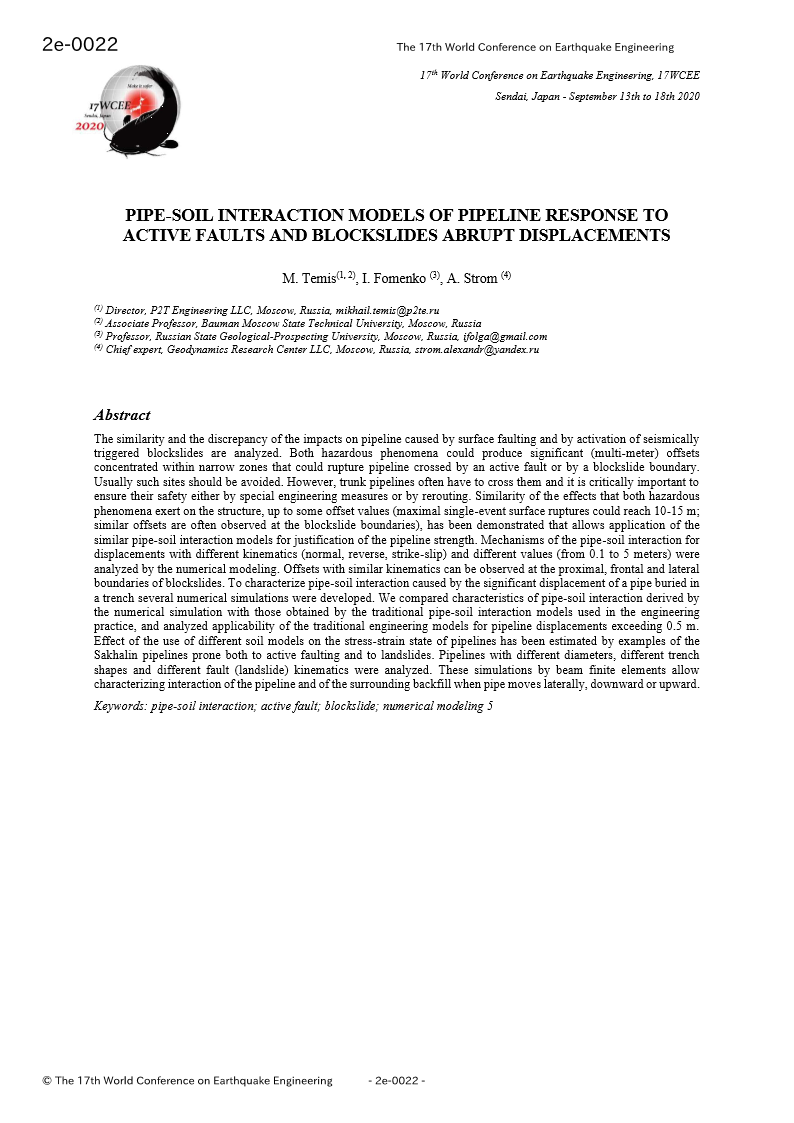Case study of the Trans-Alaska pipeline that withstood almost 6-m offset along the 2002 M8 Denali fault earthquake surface rupture [1, 2] have proved that pipeline safety at its crossing with active fault can be achieved even when multi-meter surface faulting associated with large earthquake occur. At this crossing, however, the above-ground pipelining was used, while technical requirements for many other pipelines such as those of Sakhalin-1 and Sakhalin-2 projects claim subsurface pipelining [3].
For subsurface pipelining, both for landslide and active fault crossings, buried pipeline interacts with backfill and with natural soil where the trench has been excavated, and this interaction, along with the parameters of the ground displacement (offset value and kinematics) determines pipeline stress-strain state [4]. We compared characteristics of such interaction for displacements with different kinematics (normal, reverse, strike-slip) and values (from 0.1 to 5 meters) derived using numerical results for pipe-soil model with those obtained by the traditional models of pipe-soil interaction used in the engineering practice.
M.Temis(1, 2), I. Fomenko (3), A. Strom (4), 17th World Conference on Earthquake Engineering, 17WCEE
Sendai, Japan - September 13th to 18th 2020
Sendai, Japan - September 13th to 18th 2020
















